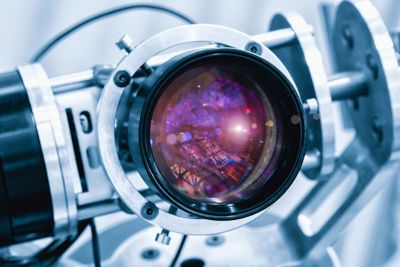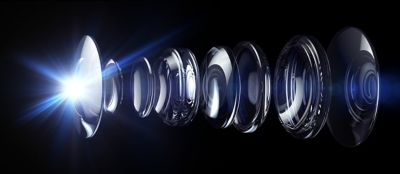-
United States -
United Kingdom -
India -
France -
Deutschland -
Italia -
日本 -
대한민국 -
中国 -
台灣
-
Ansys si impegna a fare in modo che gli studenti di oggi abbiano successo, fornendogli il software gratuito di simulazione ingegneristica.
-
Ansys si impegna a fare in modo che gli studenti di oggi abbiano successo, fornendogli il software gratuito di simulazione ingegneristica.
-
Ansys si impegna a fare in modo che gli studenti di oggi abbiano successo, fornendogli il software gratuito di simulazione ingegneristica.
-
Contattaci -
Opportunità di lavoro -
Studenti e Accademici -
Per Stati Uniti e Canada
+1 844.462.6797
ANSYS BLOG
October 21, 2022
How to Analyze Modular Transfer Function (MTF) in Ansys OpticStudio
In today’s market, the demand for optical system performance is continuously increasing. All of these new performance expectations — whether they apply to an image sensor, lens, mirror, or an entire camera — are set to a specific level of image integrity. One of the easiest measures of quality in optics is related to an optical system’s ability to transfer various levels of detail from object to image. Sharp images depend on resolution (the ability to transfer details onto an image) and contrast (the ability to distinguish between the light and dark areas of an image).
Modulation Transfer Function (MTF) is an important method of capturing the performance aspects of an optical system — basically a lens or lens assembly. MTF describes the transfer of modulation from the object to the image as a function of spatial frequency, or the reoccurring distributions of light and dark (contrast) at a particular resolution in images. It’s a way to combine resolution and contrast into one spec. MTF is commonly used to specify lens performance and as an optimization and tolerancing target during lens design.
Every optical system component has its associated MTF, whether you’re talking about a video cable, a lens, or an imaging sensor, each represented graphically on a curve. MTF is measured along lines emanating from the center of an image into the corners of the image. For sinusoidal targets, the MTF is measured in the sinusoidal response, or cycles. For bar targets, it is measured in line pairs.
Ansys OpticStudio can compute the MTF for all target types to a high degree of accuracy. This blog introduces the various sampling schemes and algorithms available in OpticStudio that you can use to measure MTF in your optical applications: MTF, Fraunhofer (FFT) MTF, Geometric MTF, and Huygens MTF.

MTF
From a good bitmap image analysis, you can take quantitative data from various line images on image quality. OpticStudio enables you to plot MTF to determine the contrast ratio for any frequency up to the maximum supported by the lens.
Fraunhofer (FFT) MTF
OpticStudio’s MTF analysis feature, which can produce a graph of MTF for all spatial frequencies that the lens can support, uses an algorithm based on the Fraunhofer diffraction theory. This well-known method involves a fast Fourier transform (FFT) of grid rays traced to the pupil. The resulting MTF is the modulation as the function of spatial frequency for a sine wave object, based on specific assumptions around the size of f/# or ratio of the focal length, the size of the region over which diffraction PSF has significant energy, the distortion of the exit pupil, and the sampling setting.
Not all optical imaging systems meet the simplifying assumptions for the Fraunhofer diffraction theory used by the FFT MTF algorithm. However, only specific spatial frequencies are required for optimization — so computing MTF at all frequencies is not required. Within OpticStudio, MTF operands that compute MTF at a specific spatial frequency support a grid parameter that can switch between the grid method used by the graphics window and a fast, sparse-sampling method that can be used for almost all optimization cases.
Geometric MTF
For cases where there are many waves of aberration (distortions of an image from an ideal optical image), the Geometric MTF calculation and GMT operands are recommended. The primary advantage to using the geometric MTF is that it is very high speed compared to a diffraction calculation. The Geometric MTF is also very accurate for systems with large aberrations, where the diffraction MTF calculation would need enormous sampling to converge. The Geometric calculation can even account for scattering from optical surfaces, which reduces MTF by increasing the background illumination. And the Geometric MTF is useful in Global Search to efficiently search all parameter space and identify regions where good designs are.
Huygens MTF
The Huygens MTF is not based on the FFT. This method is based on two basic assumptions: that f/#, or ratio of the focal length is large enough so that scalar diffraction theory applies, and that the sampling is set high enough to accurately model PSF. You can read more about this calculation in the article, “What is a Point Spread Function.”
All imaging systems meet the simplifying assumptions needed to compute Huygens PSF. The Huygens MTF is generally slower than FFT MTF, but more accurate in cases where FFT MTF assumptions do not apply. Using the Huygens calculation, a Chief Ray reference sphere can be created, an element essential for many wavefront calculations. And the Huygens MTF can sum up MTFs over multiple configurations in multiple mirror telescopes, particularly in systems with very long baseline instruments where primary mirrors are separated by large distances.

Seeing the Big Picture with Ansys OpticStudio + Ansys Speos
What happens when you want to calculate MTF within an application-based scene? Of course, if you’re interested in very good image quality, the MTF is your main metric. For many users, it would be nice to extend these tests beyond the lab. Ansys software provides an MTF calculation with an application-based scene with the same illumination as the final environment, considering the full-post processing activities as they normally occur in the lab.
In a virtual environment, OpticStudio can be used for MTF calculation of the lens system with a large target image. Speos can then generate a final image considering the full camera system (lens + image) within an application-based scene. A third-party tool is then used to calculate MTF from the final image.
Using Speos, you’ll benefit from working in application-based 3D scenes and get an added boost in faster simulation times. Coming for 2023, you will also be able to generate a final image considering post-processing. Another major benefit is that the accuracy of Speos software is easily validated by various aspects of the software, using OpticStudio or lab measurements as reference. The aspects of the tool that help to accomplish this task are:
- Setup of an application-based scene with the illumination
- HPC calculation to speed up simulation (with full lens system or with Reduced Order Model)
- Post processing feature (coming in 2023 R1)
Want to become more familiar with Ansys Speos’ Optical capabilities? Sign up for a free trial and test drive the software yourself.










